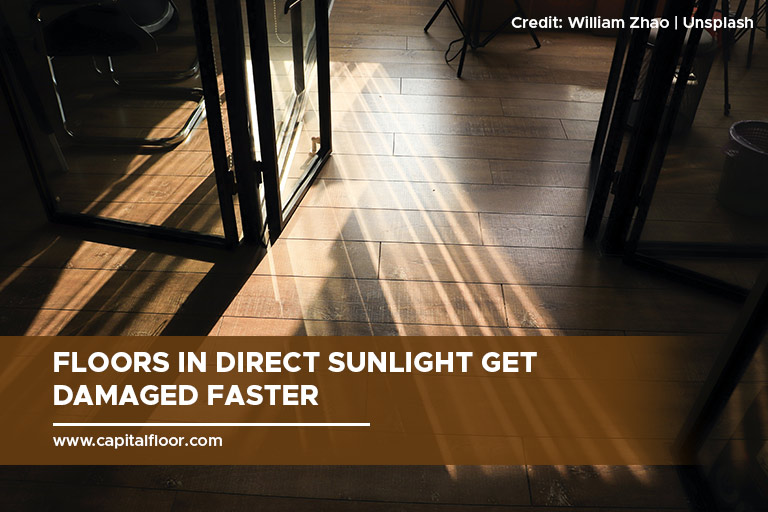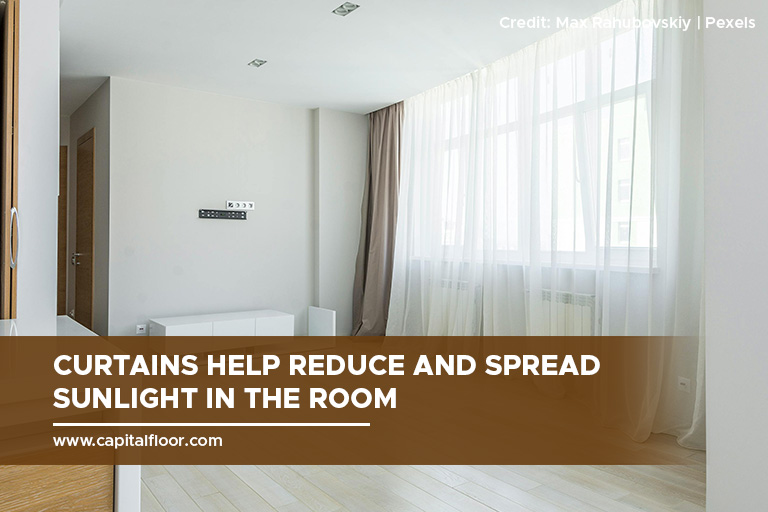Our showroom is open to the public. Please click HERE for more details.
Our showroom is open to the public. Please click HERE for more details.
Hardwood floors are a popular option because of their timeless elegance and durability. Wooden floors are well-known for their resilience and for the way they retain their inherent warmth, which both contribute to making your house more welcoming. Natural wood flooring, if properly maintained, can last for generations while retaining its beauty.
Many homeowners, until they install hardwood floors, are blissfully unaware of the fact that the sun can damage them just like their furniture, rugs, and artwork. Wood flooring isn’t a common choice for areas like a conservatory that get direct sunshine all day long because of the risk of damage. Below, we have included some information that you may find helpful if you are interested in installing natural wood flooring in your home but are concerned about the effects of sunlight on it.
The sun affects natural wood flooring since it is photosensitive. The finish gradually darkens or yellows as infrared light, along with ultraviolet and visible light, reacts with it. Because of this, certain hardwood floors with an oil-based polyurethane coating eventually acquire a yellowish hue.

The most obvious symptom of bleaching wood floors is a gradual lightening of the wood’s original hue. In sunnier spots, the floor may seem brighter or the wood stain may no longer be as deep as it once was.
When the wood floor is wet or otherwise exposed to liquids, the sun can produce discolouration. Oddly shaped stains or dark blotches on the floor’s surface are possible.
Hardwood flooring exposed to the sun can dry out and shrink, which can cause microscopic fractures and separation between the boards. Walking on the floor can potentially cause something to shift and make noises.
Wood can dry out if left in direct sunlight for too long. This can make the material feel rough and ragged when walking on the wood floors.

Covering your windows with curtains or closing them will significantly reduce the amount of ultraviolet and infrared light penetrating the interior. Blinds and shutters can be adjusted so that the light enters the room through the walls and ceiling rather than the floor.
After that, you should upgrade to specialized window film. These ultra-thin multilayer sheets block out nearly all ultraviolet (UV) and infrared (IR) rays while letting in a range of visible light intensities. Do your homework before committing to one of the several manufacturers and installers of these products.
Manufacturers of finishes are always looking for ways to combat colour fade. There is currently no solution that can permanently end this process. That holds for both factory-finished products and those completed on-site. The fading process can be slowed with certain hardwood finishes, and it would be wise to investigate these options.
You should periodically change your furnishings and floor coverings to expose previously shaded regions to natural light. This will ensure that the entire space receives the same amount of UV and IR light, slowing down the fading process and ensuring a uniform hue throughout. If you can’t rearrange your furniture, at least swap out your area rugs.
Installing tinted windows is a viable option to obstruct sunlight and provide protection to your floor against UV rays. Window tint reduces the intensity of sunlight, enhances the energy efficiency of your home, and improves privacy.
Although this does not protect against sun damage for your flooring, it is worth considering if you prefer lighter hardwood floors. The potential for fading may be less noticeable with a lighter hue.
The hardwood floors should be sanded and refinished every few years and deep cleaned regularly. Your hardwood floors will look great for many years to come if you do routine maintenance on them.
Daily (or at most weekly) sweeping, vacuuming, or dusting is recommended for hardwood floors. Any accidents must be dealt with immediately. Wet cleaning hardwood floors once every couple of months with a hardwood floor cleaner is the standard recommendation. The quantity of traffic your floors typically see will affect this.
Sanding down the wood to remove the old stain and finish is an essential step in refinishing hardwood floors. However, this takes off a thin layer of wood, which will become worn down after multiple refinishings and will need replacing in the long run.
When having floors refinished, some homeowners use the opportunity to give their rooms a facelift by selecting a new stain colour. While this is a nice perk of refinishing, it’s best to wait until your floors need it rather than using it as a cosmetic refresh.
Here are some signs that you need refinishing on your hardwood floor.
If you’re considering installing natural wood flooring in your home, these tips should come in handy when it comes to preventing damage from the sun. Capital Floor is the place to go if you need engineered hardwood flooring in Toronto. Our crew has years of experience and shares your belief that a well-chosen floor can elevate the look of any room and become the room’s center point. Contact us today at 416-536-2200 and find the best floor for your home.